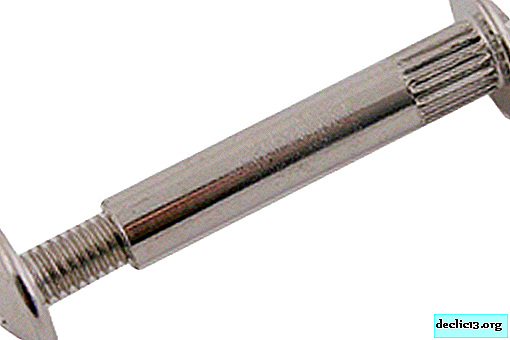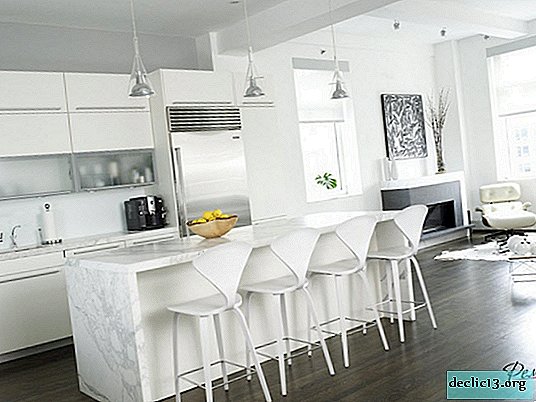Features of intersectional furniture screed, installation rules
After the assembly of cabinet furniture, some parts of the structure may have a slight bias relative to each other. If you do not connect separate cabinets or cabinets of the kitchen set to each other, it will look messy and inharmonious. Reliably fix individual elements will help the furniture coupler intersection. Thanks to this fastener, cabinet furniture looks like a single design.
Features
Furniture intersection coupler is the best way to connect individual modules to each other. Home craftsmen use self-tapping screws to fasten the walls of the headset. It’s better not to do this: under the weight of the structure, the self-tapping screws can tear out and the appearance will be damaged.
The coupler consists of a cylindrical nut with a female thread and a screw. Hardware is often chrome, they are not subject to corrosion. This is especially true if the furniture is in a room with high humidity. On the nut, for reliable fixation of structures, there are slots. An intersectional coupler for furniture should be installed without overtightening the fasteners, since with strong screwing, the nut or screw head can deform the furniture walls.
It is better to put wide washers under the nut and screw. They will help to tighten the screed as tightly as possible without damaging the polish. In order for the screed to not stick out from the inside of the furniture, it is necessary to countersink. This is not a difficult process, so you can do it yourself.


Materials of manufacture
Ties for connecting two parallel walls of cabinets are available from:
- Nickel-plated steel;
- Galvanized steel;
- Chrome steel.
 Chrome plated
Chrome plated Galvanized
Galvanized Nickel plated
Nickel platedDimensions may vary: M4-M6, screw length L1 - 15-30 mm, length L2 - 10-15 mm, outer diameter 5-8 mm. It is worth noting that for many years of using various fasteners, intersectional fasteners are the most optimal when connecting headset modules to each other. It allows not only to perfectly fasten the structure, but also facilitates the process of assembling furniture. This fastener has an attractive appearance due to its anti-corrosion coating.
Sometimes you can meet the plastic construction of the screed with a metal screw. Its dimensions do not differ from metal counterparts, but it is less reliable in everyday use.

Installation Rules
Intersectional screed furniture is made using clamps. The use of this tool helps to tightly connect upright, parallel walls of furniture to each other. Installation is as follows:
- Install cabinet furniture;
- Fix the walls with clamps. If we are talking about small kitchen tables, then only 2 tools can be used - clamps should be at the top and bottom of the structure;
- At a distance of ten centimeters from the corners, put marks and drill holes whose dimensions will correspond to the diameter of the screed;
- Install a nut in the hole;
- Start to tighten the bolt, trying to make the mount tight, but not to tighten;
- Countersink. You need to take a special tool - a vertical drill and drill a recess under the screw head. The procedure can also be performed using a thick drill, which needs to slightly expand the edge of the inlet.
If the nut begins to turn during screwing, it must be fixed with a second Phillips screwdriver. Intersection screed will stand out on the surface, but this in no way spoils the appearance of the furniture. If the protruding heads are not to your liking, then you can use special plastic linings or decorative caps.
Experts advise using a screed to evenly connect the front of the walls if the furniture is on an uneven floor or near a curved wall. If in this situation, the back of the furniture is left free, that is, it is possible to compensate for surface irregularities. To accurately determine at what distance from the end to install the screed, pay attention to the depth of the connected walls.
Ideally, the location of the fasteners looks like this:
- The upper sections are fastened only on the front side, there are two ties installed at a distance of 10-15 cm from the edge;
- The lower sections are fastened with three structures, two of which are located on the front side, and one on the back. Moreover, the latter is located in the middle of the wall.
If the fasteners are installed correctly, then after hanging the doors during the final assembly, they will not need to be adjusted. As you can see, the intersection coupler is extremely necessary. If the headset consists of several cabinets or cabinets that cannot be set due to uneven surfaces, you can compensate for this nuisance by applying this type of screed for furniture. But you need to consider that only the front surface of the walls of the headset is pulled together.
 We collect furniture
We collect furniture We fix the walls with clamps
We fix the walls with clamps We mark places for drilling
We mark places for drilling Drill a hole
Drill a hole Tighten the nuts
Tighten the nuts
















